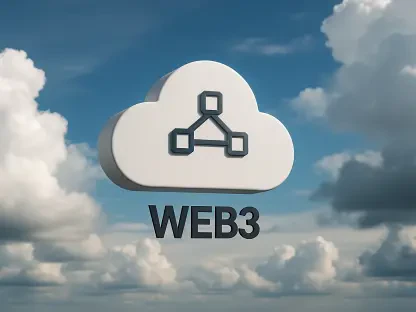Imagine a small business relying on cloud services to keep operations running smoothly, only to discover that the free technical support they depended on is no longer available. This scenario is becoming a reality for many IBM Cloud users as the company transitions its Basic Support tier to a self-service model starting next year. With the cloud industry evolving rapidly, this pivot raises questions about the balance between cost efficiency and customer satisfaction. This roundup gathers diverse opinions, insights, and tips from industry analysts, cloud providers, and user communities to unpack the implications of IBM Cloud’s decision and what it means for the broader landscape of cloud support services.
Exploring the Context Behind the Support Model Change
IBM Cloud, holding a modest market share of 2-4% compared to giants like AWS at 30% and Azure at 20%, has decided to eliminate technical case escalations for its Basic Support tier. Instead, users with Pay-As-You-Go or Subscription accounts will rely on self-help tools, an expanded documentation library, and the watsonx-powered AI Assistant for troubleshooting. Billing and account issues will still receive portal support, but for deeper technical help, paid plans starting at $200 per month are the recommended path.
This shift mirrors a growing trend among cloud providers to prioritize profitability by scaling back free-tier human interaction. Industry observers note that larger players have long limited free support to basic forums and resources, suggesting IBM’s move aligns with established norms. However, the timing of this change, amid recent operational challenges like login issues and high-severity incidents, has sparked debate about whether smaller providers can afford to reduce human support without risking user trust.
The discussion around this transition extends beyond just one company. It reflects a broader push toward automation and tiered service models in the hyperscale cloud market. As this roundup delves into varying perspectives, the focus remains on how such changes impact smaller businesses and whether self-service tools can truly fill the gap left by traditional support.
Diverse Opinions on IBM’s Self-Service Pivot
Industry Analysts Weigh In on Strategic Alignment
Many industry analysts view IBM’s decision as a pragmatic step to streamline costs in a highly competitive arena. With a smaller market footprint, maintaining extensive free support becomes a financial burden, especially when larger competitors have already set precedents for self-service reliance. Analysts argue that redirecting resources to AI-driven tools could enhance scalability if executed well.
On the flip side, some experts caution that this move might alienate smaller customers who lack the budget for paid plans. They point out that IBM’s recent service disruptions amplify the risk, as users may feel stranded without direct human assistance during critical moments. This perspective raises concerns about whether cost-cutting could undermine long-term customer loyalty.
A third angle from analytical circles suggests a middle ground, where IBM could differentiate itself by offering hybrid support options. Balancing robust self-help resources with limited but accessible human intervention might address diverse user needs without overextending operational budgets. This idea highlights the potential for innovation within constrained frameworks.
Cloud Providers’ Stance on Support Trends
Insights from other cloud providers reveal a consensus on the necessity of tiered support structures. Representatives from major hyperscalers emphasize that free tiers are unsustainable for deep technical assistance, especially for users who contribute minimal revenue. They see automation as the future, with AI tools becoming increasingly capable of handling routine queries.
However, smaller cloud vendors argue that personalized support remains a key differentiator in a crowded market. They contend that while giants can afford to push users toward paid plans, companies like IBM risk losing ground if self-service tools fail to deliver seamless experiences. This viewpoint underscores the competitive pressure on mid-tier providers to maintain user satisfaction.
An additional perspective from regional cloud firms highlights cultural differences in support expectations. In markets where human interaction is highly valued, a full shift to self-service could face resistance, suggesting that IBM might need tailored approaches for global user bases. This diversity in provider opinions illustrates the complexity of standardizing support models.
User Community Reactions and Concerns
Feedback from IBM Cloud’s user community paints a mixed picture of apprehension and cautious optimism. Many small business owners express frustration over the loss of technical case escalations, especially given past experiences with service hiccups. They worry that self-service tools, while efficient for simple tasks, may fall short during complex outages.
Conversely, some tech-savvy users welcome the emphasis on AI assistance and expanded documentation. They believe that mastering these resources could reduce dependency on support tickets, potentially speeding up issue resolution. This group sees an opportunity to adapt, provided the tools are intuitive and reliable.
A notable concern among community forums is the perceived push toward paid plans. Users with limited budgets question whether this change prioritizes corporate profit over accessibility, sparking discussions about exploring alternative providers with more generous free-tier support. These reactions reflect the real-world stakes for those directly affected by the policy shift.
Tips for Navigating the New Support Landscape
Industry voices offer practical advice for users adapting to IBM’s self-service model. A common recommendation is to invest time in learning the available tools, such as the “Report an Issue” feature, to ensure quick identification of problems. Familiarity with these systems can mitigate delays in critical situations.
Another tip focuses on evaluating the cost-benefit of upgrading to paid support plans. For businesses where downtime poses significant risks, the investment in a plan starting at $200 per month might outweigh the challenges of self-reliance. This approach encourages a proactive assessment of operational needs.
Lastly, exploring community-driven support networks is suggested as a supplement to official channels. Engaging with user forums and knowledge-sharing platforms can provide peer insights and workarounds, bridging gaps left by reduced human interaction. This strategy emphasizes the value of collective problem-solving in a changing environment.
Reflecting on Key Takeaways from the Discussion
Looking back, this roundup revealed a spectrum of perspectives on IBM Cloud’s transition to a self-service Basic Support model. Industry analysts highlighted the strategic necessity of cost efficiency, while acknowledging risks to customer trust. Cloud providers underscored the inevitability of automation, yet smaller players stressed the importance of personalized touchpoints. User communities voiced valid concerns alongside cautious hope for effective tools, and practical tips emerged to help navigate the shift.
As a next step, businesses are encouraged to dive deeper into self-service resources and weigh the merits of paid support against their operational priorities. Exploring alternative cloud providers with differing support structures also surfaced as a viable option for those dissatisfied with the change. Ultimately, this discussion underscored the need for adaptability in an industry increasingly driven by efficiency, leaving room for innovative solutions to balance user needs with financial realities.









